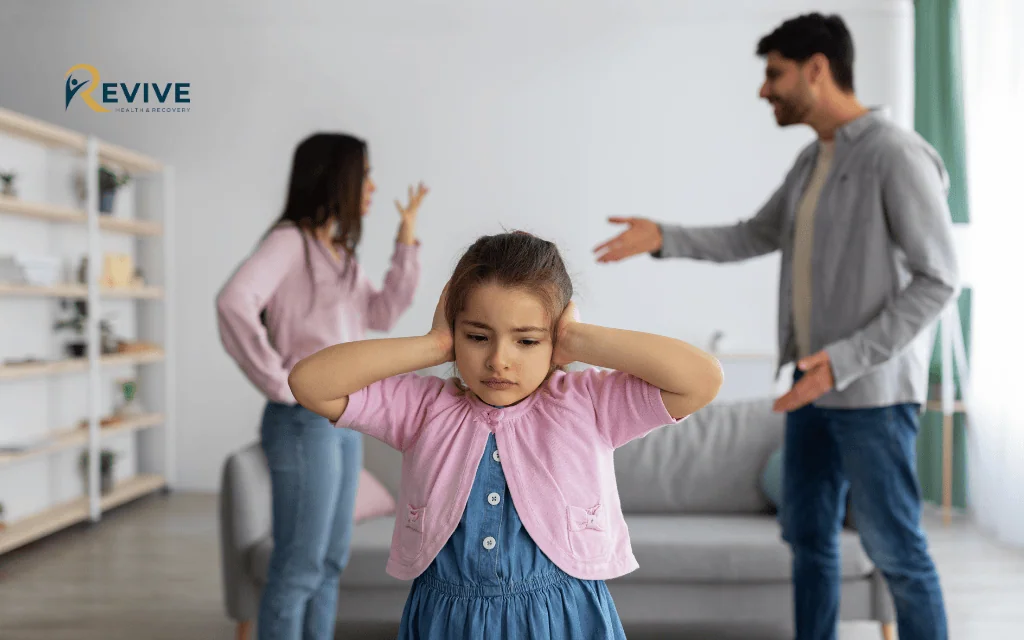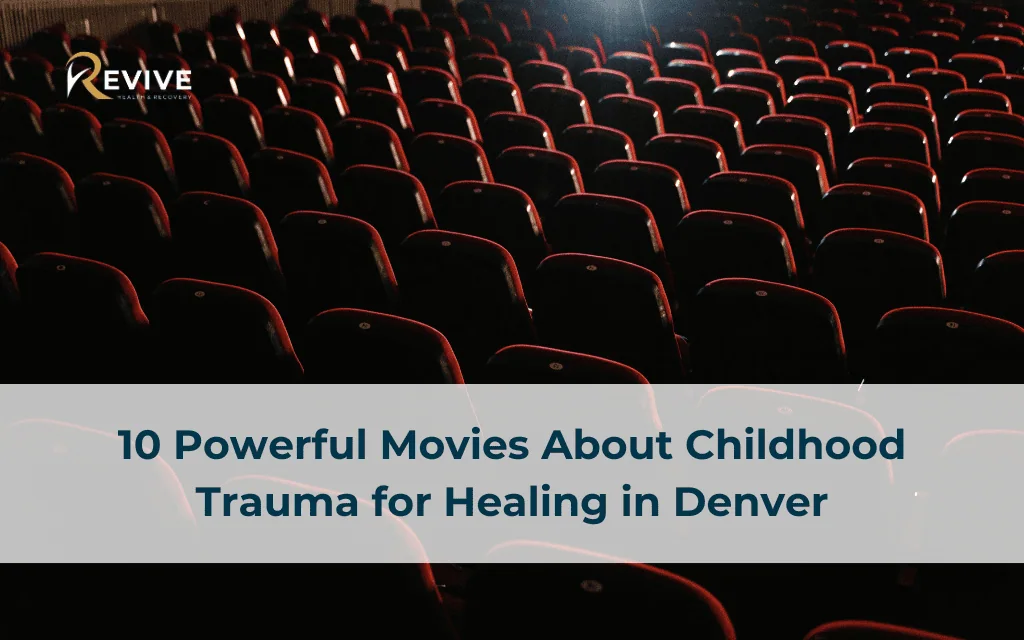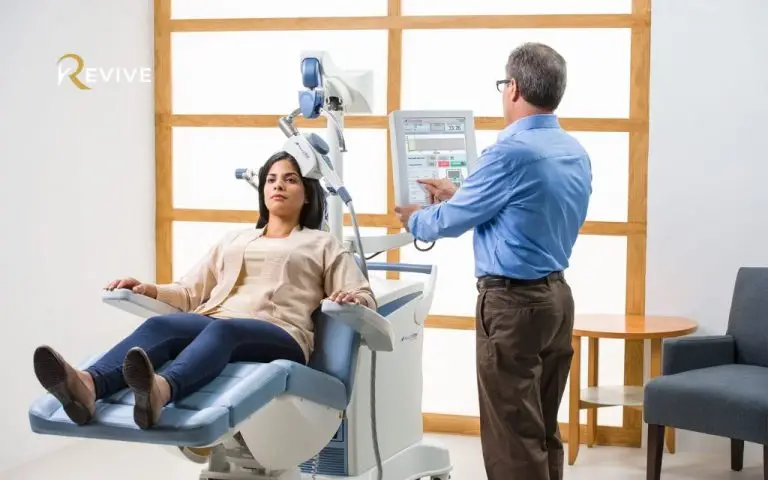Cinema has long been recognized as a powerful medium for processing and understanding complex emotional experiences, including childhood trauma. For viewers in Denver and across Colorado, watching movies about childhood trauma that authentically portray trauma can provide validation, insight, and even pathways toward healing. According to recent statistics, approximately 55% of Colorado children have experienced at least one adverse childhood experience (ACE), with roughly one in nine having experienced three or more ACEs.
These films not only entertain but can also serve as valuable tools for understanding and processing traumatic experiences. However, it’s important to note that the following content discusses films containing potentially triggering material related to childhood trauma, abuse, neglect, and their long-term effects.
Understanding The Therapeutic Value of Trauma Films
The Power of Cinema Therapy
Cinema therapy, a therapeutic approach gaining recognition among mental health professionals, uses films as tools to facilitate emotional processing and healing, with research supporting its efficacy in trauma recovery. In Denver treatment centers, therapists increasingly incorporate films that depict childhood trauma into their therapeutic approaches, helping clients recognize and process their own experiences through the safe distance of storytelling.
“Movies about trauma can offer validation for survivors who might feel alone in their experiences,” explains a Denver-based trauma specialist. “Seeing characters navigate similar challenges can normalize their feelings and provide hope for recovery.”
The Trauma Film Paradigm
The trauma film paradigm is a research methodology used by mental health professionals to study how viewing traumatic content affects viewers. This approach has revealed that when properly contextualized, films depicting trauma can actually help viewers process their own experiences in a controlled environment. The paradigm examines both exposure and reactions to viewing events with traumatic content, offering insights into how we process difficult memories and emotions.
Guidelines for Safe Viewing
For trauma survivors considering these films, mental health experts recommend:
- Watch with a trusted support person when possible
- Choose a time when you’re feeling emotionally stable
- Take breaks during intense scenes if needed
- Have self-care strategies ready (grounding techniques, comfort items)
- Consider discussing the film with a therapist afterwards
Expert Insights from Colorado Therapists
Colorado-based therapists note that film can be a uniquely effective healing tool because it engages multiple senses simultaneously, potentially accessing traumatic memories stored in non-verbal parts of the brain. Many Denver trauma recovery centers incorporate film discussions into their therapeutic approaches, creating safe spaces for clients to process their reactions.
“Films provide a shared language between therapist and client,” notes one Denver mental health professional. “They can help articulate experiences that might otherwise be difficult to verbalize, particularly for those processing the effects of trauma.”
Top 10 Movies That Authentically Portray Childhood Trauma
1. Good Will Hunting (1997)
Synopsis: This Academy Award-winning film follows Will Hunting, a mathematical genius working as a janitor at MIT, whose brilliant mind masks deep trauma from childhood abuse in the foster care system.
How the film portrays therapy and healing: The film masterfully depicts the therapeutic relationship between Will and his therapist Sean (Robin Williams), showing how trust develops gradually over time. The pivotal scene where Sean repeatedly tells Will “It’s not your fault” illustrates a breakthrough moment in trauma therapy, addressing the core belief many trauma survivors hold that they somehow deserved or caused their abuse.
Why this film resonates with trauma survivors: Good Will Hunting validates the profound impact childhood abuse can have on adult relationships and self-worth. It addresses Will’s defense mechanisms—his intellectual brilliance paired with emotional avoidance—and shows how confronting past trauma allows for genuine connection with others.
Therapeutic takeaways: The film suggests that healing requires both acknowledging past trauma and forming new, healthy attachments. It demonstrates how appropriate therapeutic boundaries and patience can create space for profound emotional healing.
2. Moonlight (2016)
Synopsis: This Oscar-winning film follows Chiron through three defining periods of his life—childhood, adolescence, and adulthood—as he navigates poverty, his mother’s addiction, bullying, and his emerging identity.
The film’s powerful portrayal of childhood adversity: Moonlight depicts how trauma manifests differently across developmental stages. Young Chiron’s quietness and vigilance reflect his adaptation to an unpredictable home environment, while teenage Chiron’s stoicism and eventual violent outburst demonstrate how unprocessed trauma can evolve.
Themes of identity formation amid trauma: The film brilliantly illustrates how trauma complicates identity development, particularly for Chiron who must integrate his experiences of adversity with his sexual identity and masculinity in a community that often rejects both vulnerability and homosexuality.
How the film offers hope and understanding: Despite its unflinching portrayal of trauma, Moonlight offers profound moments of tenderness and connection. Juan’s mentorship, Kevin’s friendship, and the film’s final scenes of vulnerability suggest that healing connections remain possible even after years of emotional armoring.
3. Precious (2009)
Synopsis: This film portrays the life of Precious Jones, a 16-year-old girl experiencing extreme physical, sexual, and emotional abuse from both parents while raising her own child born of incest.
Depiction of severe abuse and resilience: Precious unflinchingly portrays the horrific realities of intergenerational abuse while also highlighting the protagonist’s remarkable resilience. Her inner fantasy life, where she imagines herself beloved and celebrated, demonstrates a powerful psychological survival mechanism.
The role of supportive figures in healing: The film emphasizes how teachers, social workers, and peers can become transformative figures in a trauma survivor’s life. Ms. Rain’s unwavering belief in Precious provides a counter-narrative to the destructive messages from her parents.
How the film addresses generational trauma: Precious explores how trauma is passed down through generations without intervention. The cycle of abuse depicted across three generations highlights the urgent need for trauma-informed support systems.
Viewer cautions: This film contains explicit depictions of physical and sexual abuse that may be triggering for many viewers. Denver-area viewers seeking support after watching might consider reaching out to The Center for Trauma & Resilience in Denver, which provides culturally responsive trauma support services.
4. The Perks of Being a Wallflower (2012)
Synopsis: This coming-of-age story follows Charlie, a socially anxious freshman navigating high school while dealing with repressed trauma and mental health challenges.
How the film addresses repressed trauma: The film skillfully portrays how trauma can be buried and then triggered by new experiences. Charlie’s blackouts, flashbacks, and eventual breakdown demonstrate how the mind protects itself until it can no longer contain traumatic memories.
Portrayal of PTSD symptoms in adolescents: Charlie exhibits classic PTSD symptoms that are accurately portrayed: hypervigilance, emotional numbing alternating with overwhelming feelings, intrusive memories, and dissociation, which are common indicators of post-traumatic stress disorder in young people. The film shows how these symptoms can be mistaken for typical teenage awkwardness or depression.
The importance of friendship in recovery: The film highlights how healthy peer relationships can provide crucial support during trauma recovery. Sam and Patrick’s acceptance of Charlie creates safety that both helps and complicates his healing journey.
Why this film is particularly relevant for teens: The Perks of Being a Wallflower addresses trauma without defining Charlie solely by his traumatic experiences. It validates adolescent emotional experiences while offering hope that with appropriate support, healing is possible even from profound childhood trauma.

5. Mystic River (2003)
Synopsis: This psychological crime drama explores how a childhood abduction and sexual assault permanently alters the lives of three boys, following them into adulthood when another tragedy forces them to confront their past.
Long-term effects of childhood trauma: Mystic River shows how childhood trauma shapes entire lives, influencing career choices, parenting styles, and ability to trust. Dave’s struggle decades after his abuse demonstrates how trauma can remain unresolved without appropriate intervention.
How trauma shapes adult relationships: The film explores how early trauma affects adult friendships, marriages, and parent-child relationships. The complex dynamics between the three main characters illustrate different responses to collective trauma—avoidance, overprotection, and self-destructive patterns.
The film’s realistic portrayal of unresolved trauma: Director Clint Eastwood creates a somber atmosphere that mirrors the weight of carrying unresolved trauma throughout life. The film avoids simplistic resolutions, instead showing the messy, often destructive ways trauma can resurface when triggered.
Connections to trauma-informed care approaches: Mystic River offers a compelling case for early trauma-informed intervention. The absence of appropriate support for Dave following his abduction illustrates how untreated childhood trauma can lead to lifelong struggles with identity and behavior.
6. Matilda (1996)
Synopsis: This family film, based on Roald Dahl’s novel, follows an extraordinarily gifted girl who uses her intelligence and telekinetic abilities to overcome neglectful parents and an abusive school principal.
Childhood neglect through a family-friendly lens: Through humor and fantasy elements, Matilda makes the serious topic of child neglect accessible without minimizing its impact. The Wormwoods’ complete disregard for Matilda’s needs and achievements clearly portrays emotional neglect, though wrapped in comedic packaging.
Empowerment themes for younger viewers: Matilda offers a powerful narrative for children experiencing adversity: that they can develop resilience, seek supportive adults, and find their own strength even in difficult circumstances.
How resilience is portrayed for children: The film shows Matilda creating her own support systems, finding solace in books, and ultimately building a chosen family. Her resilience isn’t portrayed as simply “toughing it out” but as actively seeking resources and connections that support her well-being.
Using this film to discuss trauma with kids: Matilda provides an accessible entry point for adults to discuss difficult family dynamics with children. Its fantasy elements create emotional distance that allows for processing complex feelings about negligent or hurtful caregivers.
7. Inside Out (2015)
Synopsis: This animated Pixar film personifies the emotions inside a young girl’s mind as she copes with a difficult move to a new city, showing how joy, sadness, fear, disgust, and anger work together to process experiences.
Metaphorical exploration of emotional processing: Inside Out brilliantly visualizes how we process and store memories, particularly how emotions tag experiences as significant. The film’s depiction of core memories and personality islands provides a accessible metaphor for understanding psychological development.
How the film helps explain trauma to all ages: While not explicitly about trauma, Inside Out illustrates concepts central to trauma recovery: the importance of acknowledging sadness, the function of emotional numbing (represented by the control panel shutting down), and how memories can be reprocessed and integrated.

The neurobiological accuracy of memory portrayal: The film’s portrayal of memory consolidation and emotional processing has been praised by neuroscientists for its remarkable accuracy. The depiction of how memories can change when revisited aligns with current understanding of memory reconsolidation, a concept central to trauma therapy.
Using the film in family therapy settings: Denver therapists report using Inside Out as a therapeutic tool to help children identify and discuss their emotions, particularly in families affected by trauma. The film’s vocabulary around emotions gives children and parents a shared language for discussing complex feelings.
8. The Florida Project (2017)
Synopsis: This film follows six-year-old Moonee and her young mother living in a budget motel near Disney World, portraying childhood resilience amid poverty, instability, and parental immaturity.
Childhood resilience amid adversity: Through Moonee’s perspective, viewers witness how children can create joy and adventure even in dire circumstances. The film avoids both romanticizing poverty and depicting children as merely passive victims of their environments.
Systemic factors affecting childhood trauma: The Florida Project illustrates how economic insecurity, lack of affordable housing, and limited social support create conditions where childhood trauma becomes more likely. These systemic issues are particularly relevant to discussions about child welfare in growing urban areas like Denver.
Compassionate portrayal of struggling families: The film avoids vilifying Moonee’s mother despite her obvious parenting deficits, instead showing her as a complex person making poor choices within limited options. This nuanced portrayal challenges viewers to consider how society might better support vulnerable families.
Community support themes relevant to Denver: The impromptu community formed among motel residents demonstrates how informal support networks can provide crucial buffers for children in difficult circumstances. This theme resonates with Denver’s community-based approaches to family support and trauma prevention.
9. Room (2015)
Synopsis: Based on Emma Donoghue’s novel, Room follows a young woman and her five-year-old son who have been held captive in a single room for the child’s entire life, and their experiences adjusting to the outside world after escape.
Extreme trauma and attachment portrayal: The film explores how secure attachment can develop even in extreme circumstances, as Ma creates a structured, loving environment for Jack despite their captivity. Their relationship provides a powerful example of how parental love can buffer even severe childhood adversity.
Recovery process depiction: Room’s second half offers a realistic portrayal of trauma recovery, showing that freedom from captivity is just the beginning of healing. Both characters struggle with adjustment, experience setbacks, and must redefine their relationship outside the context of shared trauma.
Mother-child relationship in trauma healing: The film sensitively explores the complex dynamics when both parent and child are trauma survivors. Ma’s suicide attempt illustrates the immense psychological burden carried by parents trying to protect their children while processing their own trauma.
Parallels to trauma recovery journeys: While few viewers will have experienced captivity, the film’s depiction of adjusting to freedom offers metaphorical parallels to other trauma recovery experiences—learning to navigate a world that suddenly operates by different rules, managing others’ reactions to your story, and redefining identity beyond survivorship.
10. Joker (2019)
Synopsis: This psychological thriller follows Arthur Fleck, a mentally troubled failed comedian who descends into nihilistic violence, partly influenced by his traumatic childhood and society’s indifference.
Controversial portrayal of trauma outcomes: Joker presents a highly controversial depiction of how childhood trauma can, in rare cases and combined with other factors, contribute to violent behavior. It’s important to note that the vast majority of trauma survivors never become violent, and the film has been criticized for potentially stigmatizing mental illness.
Mental health system failures depicted: The film highlights how inadequate mental health services fail those with complex trauma histories. Arthur’s brief therapy sessions and abrupt termination of services when funding is cut illustrate systemic failures relevant to discussions about mental health resource allocation in Colorado.
Discussion of trauma and violence connections: Joker can prompt important discussions about how childhood maltreatment, when combined with ongoing adult victimization and lack of support, can lead to maladaptive coping. It raises questions about society’s responsibility to provide adequate mental health care as a public health measure.
Viewer discretion and contextual understanding: This film requires particular viewer discretion and ideally should be discussed in context. Denver filmmaker Adam Lipsius noted in interviews about his own trauma-focused film “Amy & Sophia” that responsible depictions of trauma require careful consideration of how they might affect vulnerable viewers.
Discover more:
- 15 Songs About Childhood Trauma That Help You Feel Seen and Understood
- 15 Powerful Novels About Childhood Trauma: Finding Healing Through Fiction
How Denver Residents Can Use These Films in Their Healing Journey
Creating a Supportive Viewing Environment
For Denver residents interested in using these films as part of their healing journey, mental health professionals suggest:
- Partner with a trusted friend, family member, or therapist for discussion
- Create physical comfort (cozy blankets, soothing drinks, comfort objects)
- Plan post-film grounding activities (gentle walk in Denver’s parks, mindfulness exercises)
- Give yourself permission to stop watching if a film becomes too triggering
- Journal about personal connections and insights after viewing
Denver-Based Trauma Therapy Resources That Incorporate Film Discussion
Several Denver therapeutic practices incorporate film into their trauma treatment approaches:
- Denver Mental Health Collective offers specialized trauma therapy including EMDR and sometimes uses films as discussion points in group sessions
- The Center for Trauma & Resilience provides culturally responsive trauma services that may include expressive arts approaches
- Trauma & Disaster Recovery Clinic at the University of Denver offers evidence-based trauma treatment and community education programs
Local Support Groups for Trauma Survivors
Denver offers several support groups specifically for trauma survivors:
- Adult Survivors of Childhood Trauma groups (check with Denver community mental health centers for current schedules)
- Colorado Trauma Recovery Groups (peer-led support in various Denver neighborhoods)
- Specialized groups for specific trauma types (domestic violence, sexual assault, combat)
Colorado Film Events Focused on Mental Health Themes
The Denver film community occasionally features events specifically focused on mental health and trauma:
- The MHSA Film Festival focusing on Mental Health and Suicide Awareness frequently screens in Denver, featuring independent films about mental health topics
- The Denver Film Festival occasionally includes panel discussions with mental health professionals following trauma-themed film screenings
- Educational screenings at the University of Colorado’s Anschutz Medical Campus sometimes feature films that accurately depict trauma and recovery
Professional Perspectives: How Denver Therapists Use Film in Trauma Treatment
Interviews with Local Mental Health Professionals
“Films create a triangle of sorts,” explains a Denver EMDR therapist. “Instead of the client directly confronting their trauma narrative, both therapist and client can discuss the character’s experience, which often leads to insights about the client’s own journey in a less threatening way.”
Another Denver trauma specialist notes: “I sometimes assign ‘cinema homework’—carefully selected films that might help clients recognize patterns or defense mechanisms they’re using. We then process these insights in session.”
Specific Therapeutic Approaches Used in Colorado

Colorado trauma treatment centers employ various evidence-based approaches that may incorporate film elements:
- EMDR (Eye Movement Desensitization and Reprocessing): Some EMDR practitioners in Denver use film scenes as starting points for processing traumatic memories
- Trauma-Focused Cognitive Behavioral Therapy (TF-CBT): Films may be used to identify and challenge trauma-related cognitive distortions
- Somatic Experiencing: Clients might track bodily sensations while watching controlled exposure to trauma-related film content
Horror director Scott Derrickson, who grew up in North Denver, based aspects of his film “The Black Phone” on his childhood experiences with trauma and violence. In interviews, he has discussed how the process of creating films about childhood trauma can itself be therapeutic. “I think my primary emotional memory of childhood is fear,” Derrickson noted, explaining how his film explores “childhood trauma and the resilience of children.”
Success Stories and Case Studies
A Denver therapist shares (with permission and anonymized): “One client who had minimized their childhood emotional neglect for years had a breakthrough after watching Matilda. Despite the film’s comedic elements, seeing the Wormwoods’ neglect of Matilda helped my client recognize and name their own experience. This opened pathways for deeper healing work.”
Another success story involves a trauma survivors’ group that watched selected scenes from Good Will Hunting, using the therapeutic relationship portrayed in the film to discuss their own experiences with trust, vulnerability, and healing.
Resources for Further Support in Colorado
Trauma-Specialized Therapists in Denver
Denver has numerous qualified trauma specialists, including:
- EMDR Center of Denver specializes in evidence-based treatment for trauma, with therapists certified in multiple trauma modalities
- Denver Wellness Counseling offers EMDR therapy for trauma processing
- Colorado Women’s Center provides trauma-focused therapy specifically addressing women’s needs
Community Mental Health Centers with Trauma Programs
Denver’s community mental health resources include:
- Mental Health Center of Denver offers specialized trauma services on a sliding fee scale
- Denver Health Outpatient Behavioral Health Services provides trauma-informed care
- Colorado Crisis Services offers 24/7 support via phone (1-844-493-8255), text, or walk-in centers throughout Denver
Support Groups Specifically for Childhood Trauma Survivors
Several organizations in Denver host regular support groups:
- The Blue Bench facilitates groups for sexual assault survivors
- The Trauma and Resilience Support Network offers peer groups across Denver
- Various 12-step and spiritual communities address trauma-specific healing
Crisis Resources for Immediate Help
For Denver residents needing immediate support:
- Colorado Crisis Services: Call 1-844-493-8255, text TALK to 38255, or visit a walk-in center
- National Suicide Prevention Lifeline: 988 or 1-800-273-8255
- The Center for Trauma & Resilience 24/7 hotline: 303-894-8000 (English) or 303-718-8289 (Spanish)
Why Choose Revive Health Recovery for Trauma Treatment
At Revive Health Recovery, we understand that childhood trauma can have lasting effects well into adulthood. Our Denver-based center specializes in trauma-informed care that acknowledges the complex relationship between past experiences and current challenges. Here are five reasons to choose Revive Health Recovery for your healing journey:
- Specialized Trauma Expertise: Our team includes certified trauma specialists with extensive training in evidence-based approaches including EMDR, Somatic Experiencing, and trauma-focused cognitive behavioral therapy.
- Holistic Treatment Approach: We address not just the psychological aspects of trauma but also the physical, emotional, and social impacts, creating comprehensive healing plans tailored to each individual.
- Innovative Therapeutic Techniques: Our clinicians incorporate cutting-edge approaches like cinema therapy, art therapy, and mindfulness-based interventions to provide multiple pathways to healing.
- Supportive Community Environment: In addition to individual therapy, we offer trauma-specific group support where clients can share experiences and healing strategies in a safe, facilitated setting.
- Continuity of Care: We provide seamless support from initial assessment through treatment and aftercare, ensuring that clients have consistent guidance throughout their recovery journey.
FAQs about Movies About Childhood Trauma
How can watching movies about trauma be helpful rather than harmful?
When approached thoughtfully, movies about childhood trauma can create emotional distance that allows for processing difficult experiences. They can validate survivors’ experiences, reduce isolation, and provide hope through seeing characters’ healing journeys. However, it’s important to watch with appropriate support and self-care strategies in place. At Revive Health Recovery, we can help guide you through using media as a healing tool while providing professional support.
What should I do if a movie triggers my childhood trauma memories?
First, engage in grounding techniques: focus on your five senses, practice deep breathing, or use tactile objects to reconnect with the present. Reach out to your support system, whether friends, family, or a therapist. If needed, contact crisis resources like Colorado Crisis Services at 1-844-493-8255. Revive Health Recovery offers immediate support for these situations and can help develop personalized coping strategies for managing triggers.
Are there movies about childhood trauma that are appropriate for teenagers?
Yes, films like “The Perks of Being a Wallflower,” “Inside Out,” and “Matilda” address trauma in ways that may be appropriate for teens, depending on their maturity and personal history. Parental guidance and open discussion are recommended. Revive Health Recovery offers family therapy and adolescent-specific trauma treatment to help families navigate these sensitive conversations together.
How do Denver therapists incorporate movies into trauma treatment?
Denver therapists might assign specific films as “therapeutic homework,” use film clips to illustrate psychological concepts, or discuss a client’s reactions to movies they’ve watched. These approaches create metaphorical distance that sometimes makes trauma processing more accessible. At Revive Health Recovery, our therapists are trained in innovative approaches that can include carefully selected media as part of a comprehensive treatment plan.
What are some uniquely Colorado-based resources for trauma survivors interested in film therapy?
Denver filmmaker Adam Lipsius created “Amy & Sophia,” which specifically explores childhood trauma and healing in a Colorado context. The Denver Film Festival occasionally features trauma-themed selections with panel discussions by local mental health professionals. Additionally, the MHSA Film Festival in Denver focuses on mental health awareness. Revive Health Recovery connects clients with these community resources while providing the most comprehensive trauma treatment services in the Denver area.
Conclusion
The journey of healing from childhood trauma is deeply personal, and films can serve as powerful companions along that path. The movies discussed in this article offer different perspectives on trauma and recovery, potentially providing validation, insight, and hope to survivors.
However, films are just one tool among many. True healing typically requires professional support, personal courage, and ongoing care. If you or someone you know is struggling with the effects of childhood trauma, remember that help is available right here in Denver.
At Revive Health Recovery, we’re committed to providing compassionate, evidence-based trauma treatment in a safe and supportive environment. Our team understands the complex nature of childhood trauma and its effects across the lifespan. We invite you to take the next step in your healing journey by reaching out to us.
Contact Revive Health Recovery today at (303) 268-4655 or email us at contact@revivehealthrecovery.com to schedule a confidential consultation. Our center is conveniently located at 1427 S Federal Blvd, Denver, CO 80219, and our compassionate staff is available 24/7 to answer your questions and guide you toward healing.
You don’t have to face trauma alone. Let us help you write the next chapter of your story – one of healing, growth, and renewed hope.



